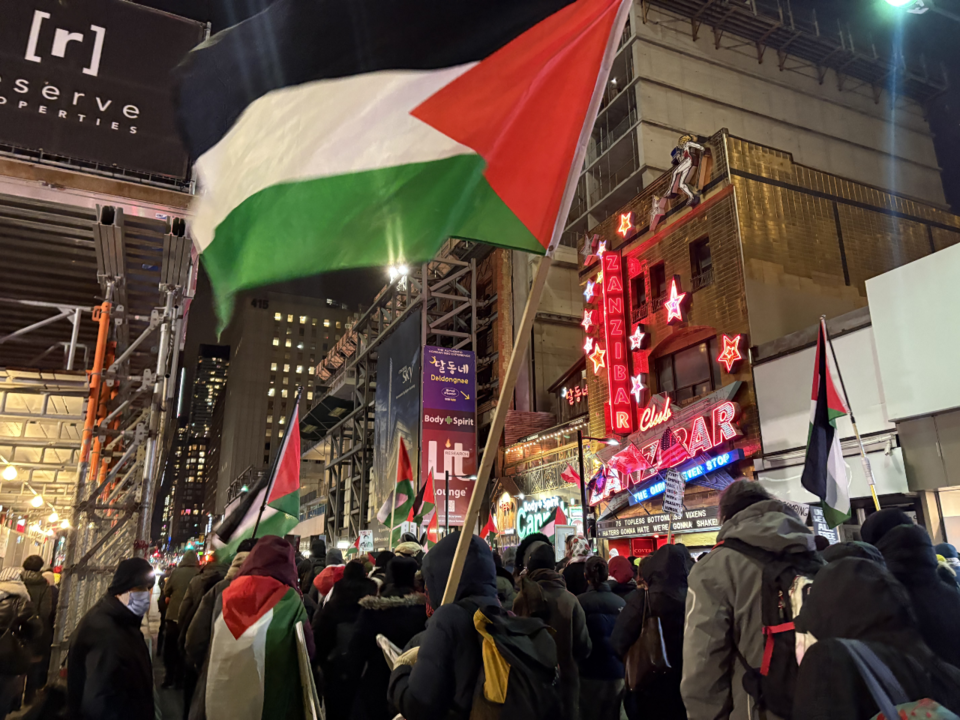Coun. Gord Perks (Parkdale-High Park) is requesting a “transparent” and “fair” consultation process on a proposed bubble zone bylaw that could ban protests near schools and places of worship.
Perks’ motion takes issue with the potential bylaw and the city’s current consultation process, which asked Torontonians for input on the framework that’s expected to come to council in May.
Perks cited an April 1 letter from the Canadian Civil Liberties Association (CCLA), where the organization said it has “reservations” about the bylaw and consultation process because it “raises serious Charter concerns.”
“While we commend the city for consulting with its residents, we respectfully believe that the survey sometimes presents a skewed, if not misleading, view of the rights and interests at stake,” the CCLA wrote in a letter to Toronto councillors.
Concerns with the city’s consultation survey
Perks and the CCLA cited concerns about the city’s survey, which they believe uses skewed language to make bylaws that limit protests seem uncontentious.
The survey’s preamble says the potential bylaw isn’t intended to “prohibit peaceful and lawful demonstrations,” which the CCLA said is “misleading.”
Perks said protests are peaceful as long as they don’t “reach the level of physical violence or threats of physical violence,” even if “they are disturbing, offensive or conveying intolerant or discriminatory expression.”
“A bubble zone bylaw limiting this type of expression would expressly limit peaceful protests, which makes the survey’s statement potentially misleading,” Perks wrote.
The survey also failed to mention an ongoing constitutional challenge to a similar bylaw in Calgary.
“This omission gives the impression that these bylaws are commonplace and non-contentious, which is not accurate,” Perks wrote.
He also questioned the validity of the survey, describing it as “an anonymous process that does not even require respondents to attest that they are Toronto residents.”
“This raises questions about what measures, if any, the city has implemented to ensure that results are not skewed by non-residents’ input or by multiple survey submissions made by the same individuals,” he wrote.
Perks’s motion will go to council next week and requires city staff to answer a detailed list of 15 questions.
What is a bubble zone?
Last December, council directed city manager Paul Johnson to draft a bylaw “with an emphasis on protecting vulnerable institutions such as places of worship, faith-based schools and cultural institutions.” The bylaw could potentially include creating zones where protests would be restricted or banned.
The bylaw was delayed because the city needed more time to consult with the public and various city agencies, Johnson wrote in a letter to council last month.
Coun. James Pasternak (York Centre) has argued in favour of the bubble zone bylaw, contending it is needed to "keep protests a safe distance from vulnerable institutions, such as places of worship."
Pasternak’s concern about the safety of religious institutions stems from the ongoing pro-Palestine protests that have taken place across the city since the Hamas attack on Israel on Oct. 7, 2023. Pasternak has claimed the protests have caused “anarchy” on Toronto streets.
A protest against the bylaw is planned for Thursday at Nathan Phillips Square. Speakers include representatives from Progress Toronto, the Centre for Free Expression, United Church of Canada and United Steelworkers union.
How would the bubble zones impact protests in Toronto?
TorontoToday created a map to model how a potential bubble zone bylaw could affect demonstrations in Toronto, based on the one similar bylaw already in place in Vaughan.
Vaughan’s bylaw restricts “nuisance demonstrations,” defined as protests that are enacted “on an objective standard, to cause a reasonable person to be intimidated.” The protests are banned within 100 metres of hospitals, child care centres, places of worship, schools and seniors’ facilities.
If Toronto’s council adopts a similar 100-metre policy, most of the city’s downtown core and major streets would be off-limits, TorontoToday’s map shows.




